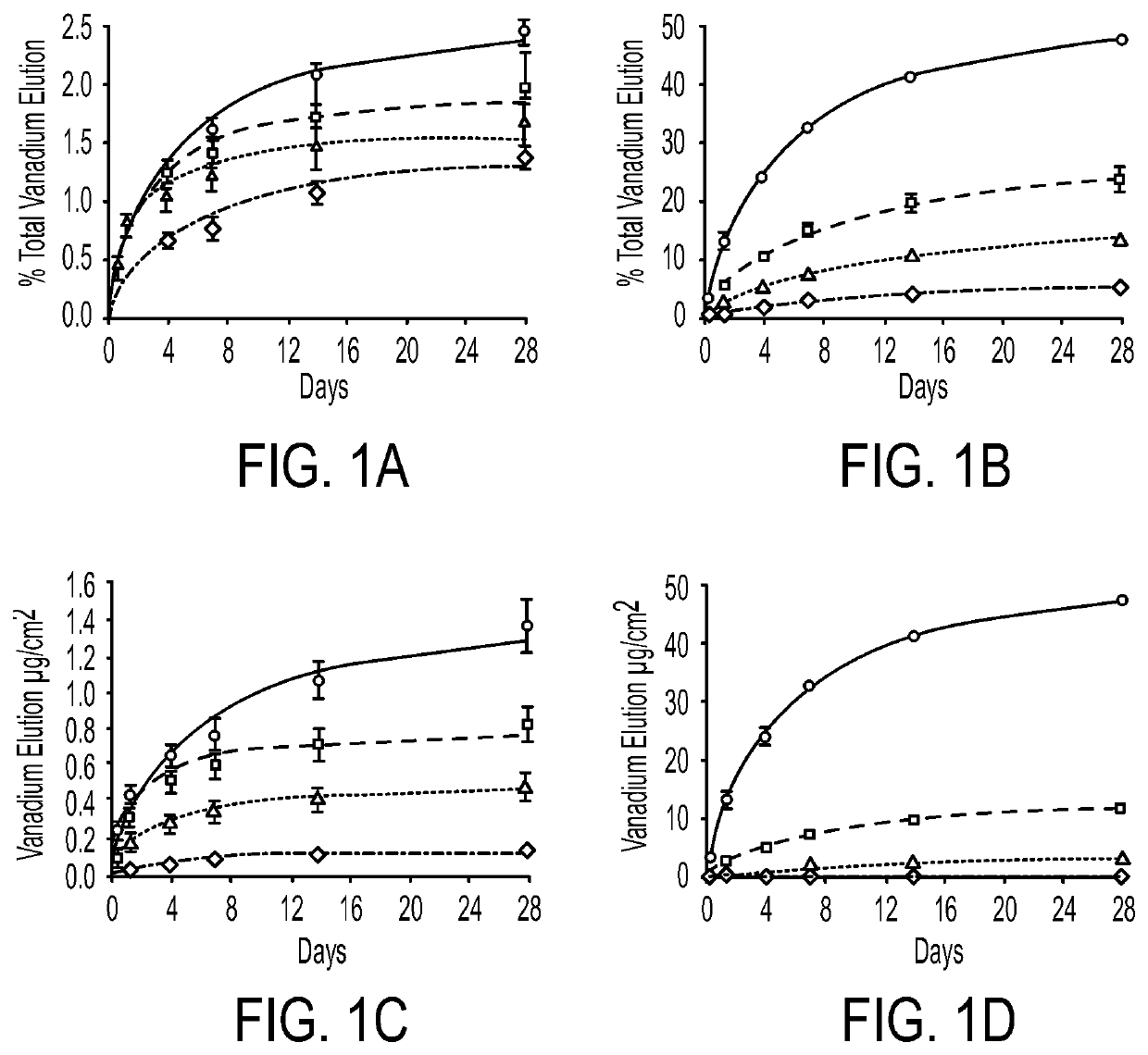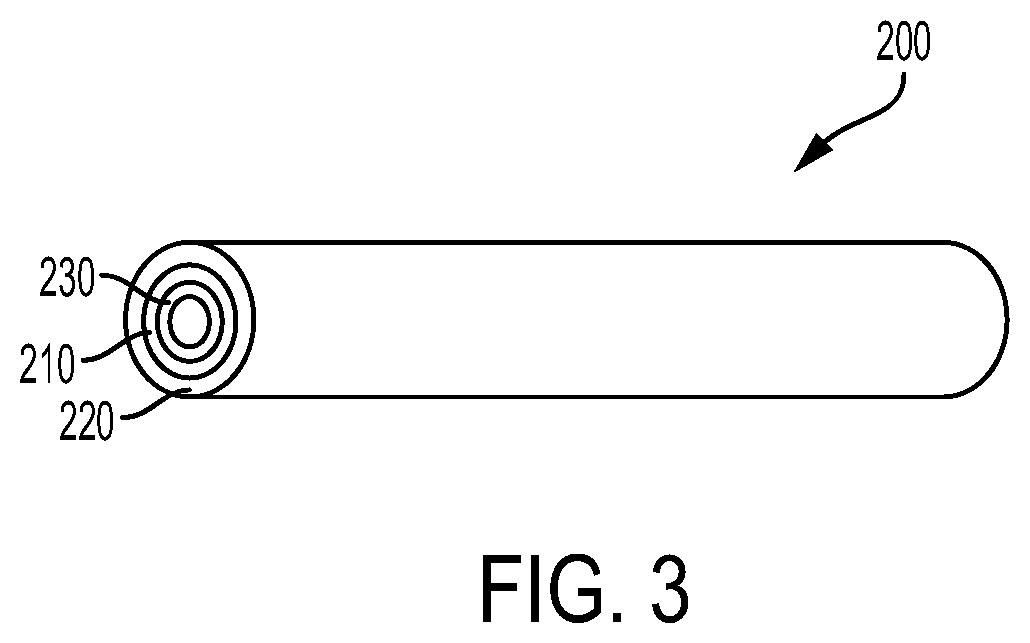Metal oxide and polymer controlled delivery systems, sunscreens, treatments, and topical coating applicators
a technology of metal oxide and polymer, applied in the direction of pharmaceutical delivery mechanism, organic active ingredients, inorganic non-active ingredients, etc., can solve the problem of requiring a relatively high dose to deliver therapeutic amounts of drugs across the skin, the stratum corneum of the transdermal drug delivery, and the primary rate limit barrier, so as to improve the release and skin permeation properties, reduce the occurrence of leakage, and improve the effect of releas
- Summary
- Abstract
- Description
- Claims
- Application Information
AI Technical Summary
Benefits of technology
Problems solved by technology
Method used
Image
Examples
example 1
[0045]Coatings are formed on an article, medical device or implant, such as a catheter, fracture fixation device, joint replacement, wound dressing or applied directly to a structure or tissues of the body, such as the skin, bone, muscle or organs from a composition consisting of a liquid precursor solution of titanium isopropoxide, methoxy amine functionalized polydimethylsiloxane, isopropanol and hexanes and the dopant silver neodecanoate. For the reservoir layer, these chemicals are mixed together at room temperature and by volume in the ratios of 1:0.01:10.35:0.817:2.0 (for titanium isopropoxide, methoxy amine functionalized polydimethylsiloxane, isopropanol and hexanes and the dopant silver neodecanoate respectively), while the outermost layer forming the diffusion barrier is mixed in the ratios of 1:0.1:10.35:0.817:0.2 (respectively). In this case, the reservoir layer is made from a solution containing ten times more silver than the barrier layer. The reservoir chemistry also ...
example 2
[0046]A dip coating method may be used to apply the coating system. In this case, the volume of the solvents would be increased by approximately eight fold to facilitate the formation of a unified coating. For this method, the reservoir layer chemicals would be mixed together at room temperature and by volume in the ratios of 1:0.01:82.8:6.54:2.0 (respectively for titanium isopropoxide, methoxy amine functionalized polydimethylsiloxane, isopropanol and hexanes and the dopant silver neodecanoate), while the outermost layer forming the diffusion barrier is mixed in the ratios of 1:0.1:82.8:6.54:0.2 (respectively). The medical device would then be dipped into the reservoir solution at a rate of approximately 4 inches per second and withdrawn at a rate of approximately 2 inches per second, under normal atmospheric conditions and room temperature. A slightly elevated temperature of approximately 37 C to 41 C or 80 C can be used to speed flashing and evaporation of the solvents. This elev...
example 3
[0047]Solutions formed from solid state suspensions for metal oxides and polymers can be used to create coatings with broad spectrum photoactivity as described in the patent applications: U.S. PGPUB No. 2009 / 0104095, U.S. Ser. No. 12 / 253,530 to Jarrell et al. filed Oct. 17, 2008 entitled Method of Making a Composite from Metal Oxide and Polymer Precursors; U.S. PGPUB No. 2009 / 0105384, U.S. Ser. No. 12 / 253,555); U.S. PGPUB No. 2009 / 0104473, U.S. Ser. No. 12 / 253,354 filed Oct. 17, 2008 entitled Novel Compositions and Related Methods, Coatings, and Articles; and U.S. PGPUB No. 2011 / 0092870, U.S. Ser. No. 12 / 975,218 filed Dec. 21, 2010 entitled Composition including metal oxide and polymer. This photoactivity is related to the formation of valence electrons in the presence of photons from x-rays to infrared which also produces superoxide in the presence of moisture or water.
[0048]The reaction does not yield a large amount of hydroxyl radials when compared to the photocatalytic propertie...
PUM
| Property | Measurement | Unit |
|---|---|---|
| thick | aaaaa | aaaaa |
| air pressure | aaaaa | aaaaa |
| thickness | aaaaa | aaaaa |
Abstract
Description
Claims
Application Information
 Login to View More
Login to View More - R&D
- Intellectual Property
- Life Sciences
- Materials
- Tech Scout
- Unparalleled Data Quality
- Higher Quality Content
- 60% Fewer Hallucinations
Browse by: Latest US Patents, China's latest patents, Technical Efficacy Thesaurus, Application Domain, Technology Topic, Popular Technical Reports.
© 2025 PatSnap. All rights reserved.Legal|Privacy policy|Modern Slavery Act Transparency Statement|Sitemap|About US| Contact US: help@patsnap.com



